 Text Copyright 2006 by Kim Haasarud. All rights reserved. Photography Copyright 2006 by Alexandra Grablewski. Food styling by Jee Levin. Prop styling by Leslie Siegel. www.hmhco.com Library of Congress Cataloging-in-Publication Data: Haasarud, Kim. 101 margaritas / Kim Haasarud ; photography by Alexandra Grablewski. p. cm. cm.
Text Copyright 2006 by Kim Haasarud. All rights reserved. Photography Copyright 2006 by Alexandra Grablewski. Food styling by Jee Levin. Prop styling by Leslie Siegel. www.hmhco.com Library of Congress Cataloging-in-Publication Data: Haasarud, Kim. 101 margaritas / Kim Haasarud ; photography by Alexandra Grablewski. p. cm. cm.
Includes index. ISBN-13: 978-0-7645-9986-6 (cloth) ISBN-10: 0-7645-9986-0 (cloth) 1. Margaritas. 2. Tequila. Cocktails. I. Title. Title.
TX951.H2 2006 641.874--dc22 2005009863 Ebook ISBN 978-0-544-18925-6 v2.0715 To My Husband, Kevin. The best taste-tester around. Thanks for all your support and encouragement. The Margarita The story goes that the Margarita was created by a woman named Margarita Sames. She mixed her favorite liqueur, Cointreau, with tequila and lime juice and served it in glasses dusted with salt. Another theory is that it was named after Margarete, a descendent of the Spanish explorer Ponce de Len.
My favorite is the story of the Greek god Agavethenos, whose fiery spirit could only be tamed by the soothing goddess of citrus, Margarthena, hence the Margarita.... Okay, I made that last one up, but the point is no one really knows where or when the Margarita was created, only that its centerpiece ingredient is tequila, accented with orange liqueur and lime juice. Today, the Margarita can be found in nearly every bar and restaurant in the Western Hemisphere, and with the increasingly widespread popularity of tequilas, it is possible to find the Margarita throughout Europe and across Asia and the Pacific Rim. The Margarita, the happy hour staple, has been known to fuel social gatherings and even to serve as a catalyst for life-changing decisions. (One year, my husbands family drank a pitcher of Margaritas and then decided to move to Switzerland.) In the past, the tequilas that were commonly available in the United States were lower-quality blends. Lime and salt were necessary to tame their harshness.
Todays super-premium 100 percent blue agave tequilas are akin to New World cognacs, and are referred to by a nouveau breed of connoisseur as sipping tequilas. These recently introduced tequilas have moved the benchmark of quality, and they range widely not only in aging methods and color, but also in taste. A great Margarita enhancesand does not maskthe essence of these tequilas. My Margarita Philosophy Traditionally a Margarita is made with tequila, orange liqueur, lime juice, and sugar. It sounds simple enough, yet weve all had bad ones... too bitter, too sour, too sweet, watered down, too strong, too weak, or just tasting like its missing something.
The key to making the perfect Margarita is balance. A balance of sweet and sour notes with the right amount of tequila is what makes a good Margarita great. Understanding that creating a Margarita is a balancing act and not the result of using a specific ingredient opens up a new world of flavors not traditionally associated with the Margarita. Coffee, ginger, sake, rhubarb, and hazelnut are just a few examples of how the cocktails in this book take the Margarita to a new level. While the traditional favorites (classic, strawberry, passionfruit, raspberry, etc.) are all here, this book breaks the Margarita boundaries to include some wild and unique recipes that hopefully will both entice and surprise you. Ingredients I strongly recommend using fresh, high-quality ingredients.
While they may be a little more expensive, they make a dramatic difference in flavor. For example, when using real, freshly squeezed lime juice with 100% blue agave tequila, the lime juice enhances the finer subtleties in the tequila. On the other hand, using lime juice with a lower-quality tequila usually serves only to mask the harsh and bitter flavors of inferior tequilas. There is no excuse for a bitter aftertaste when with a little effort and creativity you can add accents that make the subtle terroir of the agave explode. Salt vs. No Salt Salt for many people is synonymous with the Margarita.
Its original purpose was to act as a counterbalance to the fieriness of some tequilas, while accenting the sweet-and-sour flavor. Many 100 percent blue agave tequilas already have a subtle saline flavor to them. These days, with superior blue agave tequilas widely available, salt is no longer needed. But as a remnant of tradition, the use of salt has become customary. While it is a popular addition to the Margarita, it can also be disastrous. For most fruit-based Margaritas, I would recommend a coarse sugar rim or no rim at all.
Throughout the book, Ive clearly indicated how best to serve each recipe. The salt shaker icon with the red checkmark shows that a salted rim is appropriate, and the salt shaker with the X through it accompanies those recipes that should not be served with salt. My personal preference is not to use salt; it distracts from the subtle nature of premium agave tequilas. That said, if using a standard tequila, feel free to use salt, but please do so with discretion. For a standard salt rim, wet the rim of the Margarita glass with lime juice. Roses Lime Juice works bestit is a little thicker and stickier than regular lime juice.
Dip the wet rim into coarse salt several times to ensure coverage and set aside. 
 Simple Syrup Sugar is a key ingredient in a Margarita, whether its in the form of a sweet spirit, fruit, or simple syrup. It is one of the key performers in the balancing act. Often, when youve had a Margarita that is too sour or too bitter, it is the balance of sugar that is off. Simple syrup is the most basic form of sugar that is used in Margaritas. If you plan on making some Margaritas (or just about any other cocktail) for company, prepare a batch of this simple syrup in advance.
Simple Syrup Sugar is a key ingredient in a Margarita, whether its in the form of a sweet spirit, fruit, or simple syrup. It is one of the key performers in the balancing act. Often, when youve had a Margarita that is too sour or too bitter, it is the balance of sugar that is off. Simple syrup is the most basic form of sugar that is used in Margaritas. If you plan on making some Margaritas (or just about any other cocktail) for company, prepare a batch of this simple syrup in advance.
You can store it in the refrigerator, covered, for up to 5 days. 12 cup white sugar 12 cup hot water In a small bowl or glass, combine the sugar and hot water and stir until completely dissolved. Let cool completely before using. Agave nectar is another form of sugar that can be used in lieu of simple syrup. It is extracted from the agave plant itself and is sweeter than refined sugar. It also doesnt have the same sugar rush effect.
It is excellent in Margaritas, and although it may be difficult to find in your local supermarket, its worth the extra effort. You can find it at www.agavenectar.com. Fire and water, sweet and sour... this is the balancing act that goes into the perfect Margarita. Whether youre having a rowdy round with friends or a quiet sipping experience with a loved one, the Margarita in all its manifestations is a drink for the ages. and experiment with the wide range of fresh ingredients and premium agave tequilas that will lead to an extraordinary Margarita experience. and experiment with the wide range of fresh ingredients and premium agave tequilas that will lead to an extraordinary Margarita experience.
Cheers! Kim Haasarud, the Liquid Chef Classic Margarita  2 ounces tequila 2 ounces 1 ounce Cointreau 1 ounce lime juice 1 ounce lemon juice lime wheel, for garnish Combine the ingredients in a cocktail shaker filled with 34 cup cubed ice and shake vigorously. Pour with the ice or strain into a glass, depending on personal preference. If serving frozen, combine the ingredients in a blender with 34 cup crushed ice, blend until smooth, and pour into a glass. Garnish with a lime wheel.
2 ounces tequila 2 ounces 1 ounce Cointreau 1 ounce lime juice 1 ounce lemon juice lime wheel, for garnish Combine the ingredients in a cocktail shaker filled with 34 cup cubed ice and shake vigorously. Pour with the ice or strain into a glass, depending on personal preference. If serving frozen, combine the ingredients in a blender with 34 cup crushed ice, blend until smooth, and pour into a glass. Garnish with a lime wheel. 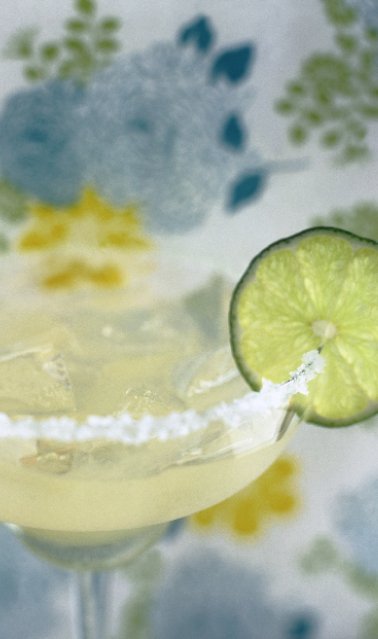
Next page
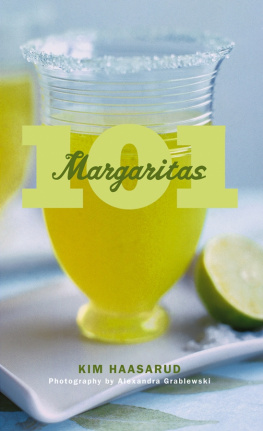

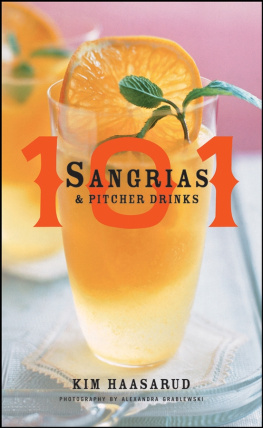


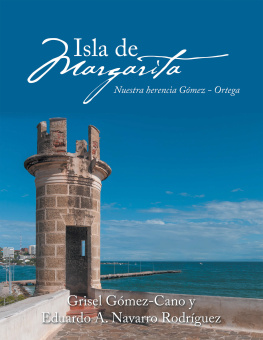



![Richard Woodman [Richard Woodman] - The Disastrous Voyage of the Santa Margarita](/uploads/posts/book/140251/thumbs/richard-woodman-richard-woodman-the-disastrous.jpg)

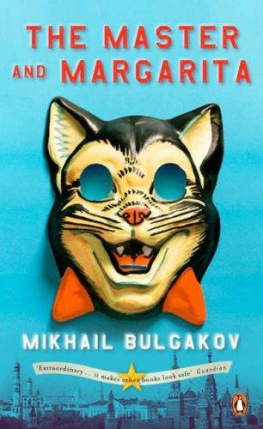
 Text Copyright 2006 by Kim Haasarud. All rights reserved. Photography Copyright 2006 by Alexandra Grablewski. Food styling by Jee Levin. Prop styling by Leslie Siegel. www.hmhco.com Library of Congress Cataloging-in-Publication Data: Haasarud, Kim. 101 margaritas / Kim Haasarud ; photography by Alexandra Grablewski. p. cm. cm.
Text Copyright 2006 by Kim Haasarud. All rights reserved. Photography Copyright 2006 by Alexandra Grablewski. Food styling by Jee Levin. Prop styling by Leslie Siegel. www.hmhco.com Library of Congress Cataloging-in-Publication Data: Haasarud, Kim. 101 margaritas / Kim Haasarud ; photography by Alexandra Grablewski. p. cm. cm.
 Simple Syrup Sugar is a key ingredient in a Margarita, whether its in the form of a sweet spirit, fruit, or simple syrup. It is one of the key performers in the balancing act. Often, when youve had a Margarita that is too sour or too bitter, it is the balance of sugar that is off. Simple syrup is the most basic form of sugar that is used in Margaritas. If you plan on making some Margaritas (or just about any other cocktail) for company, prepare a batch of this simple syrup in advance.
Simple Syrup Sugar is a key ingredient in a Margarita, whether its in the form of a sweet spirit, fruit, or simple syrup. It is one of the key performers in the balancing act. Often, when youve had a Margarita that is too sour or too bitter, it is the balance of sugar that is off. Simple syrup is the most basic form of sugar that is used in Margaritas. If you plan on making some Margaritas (or just about any other cocktail) for company, prepare a batch of this simple syrup in advance.